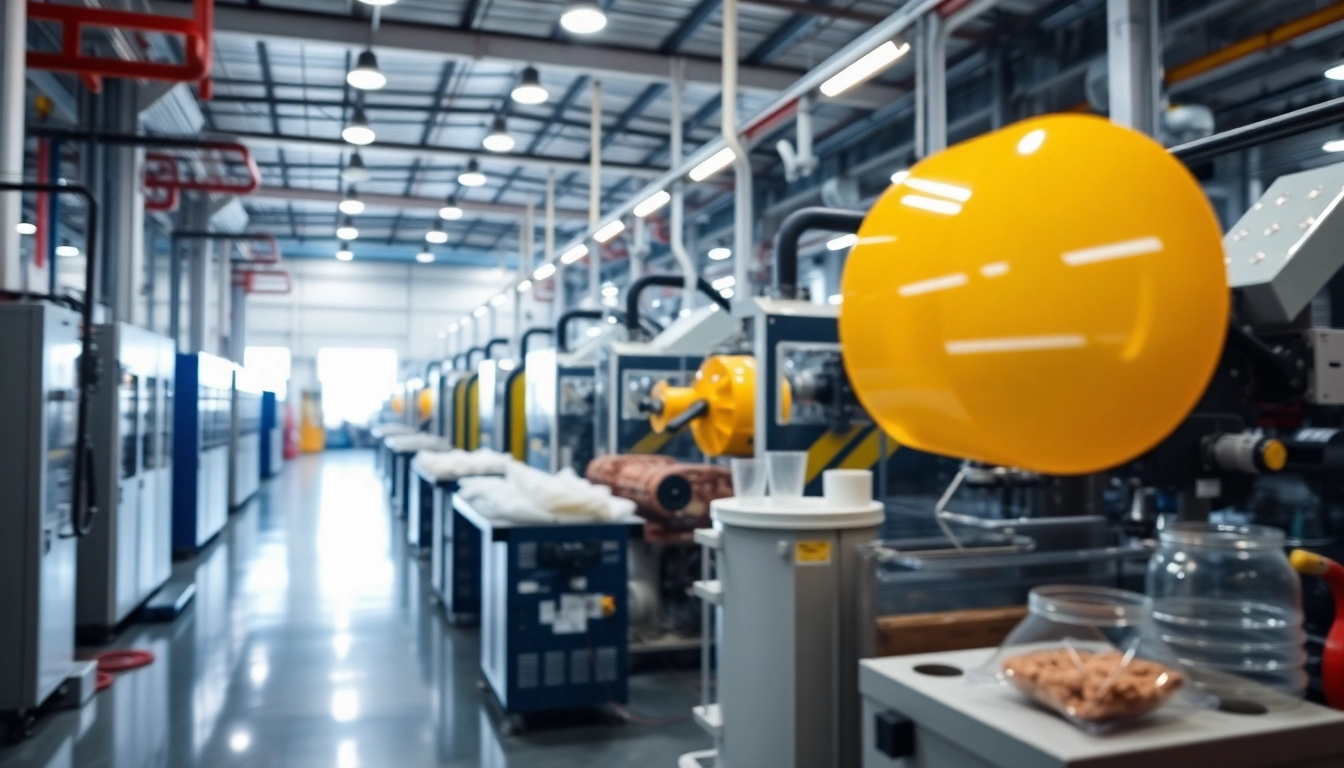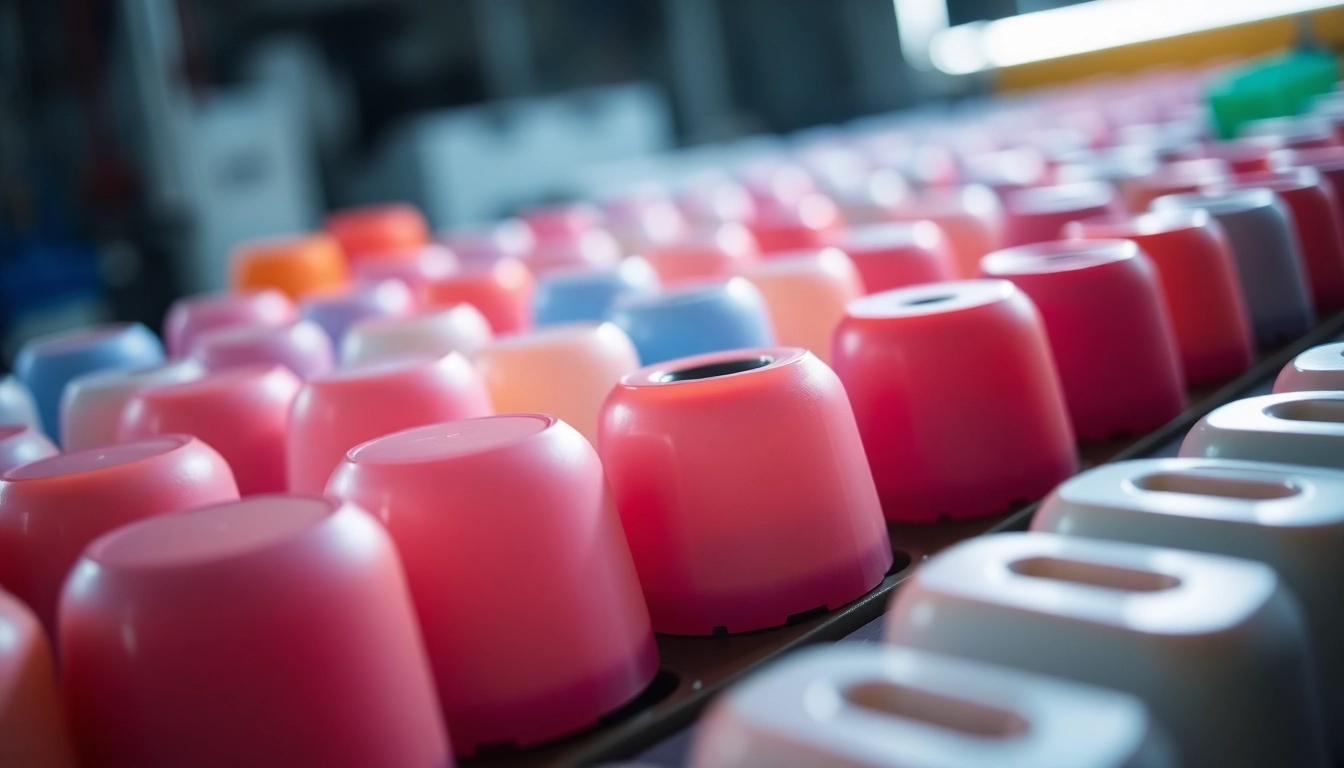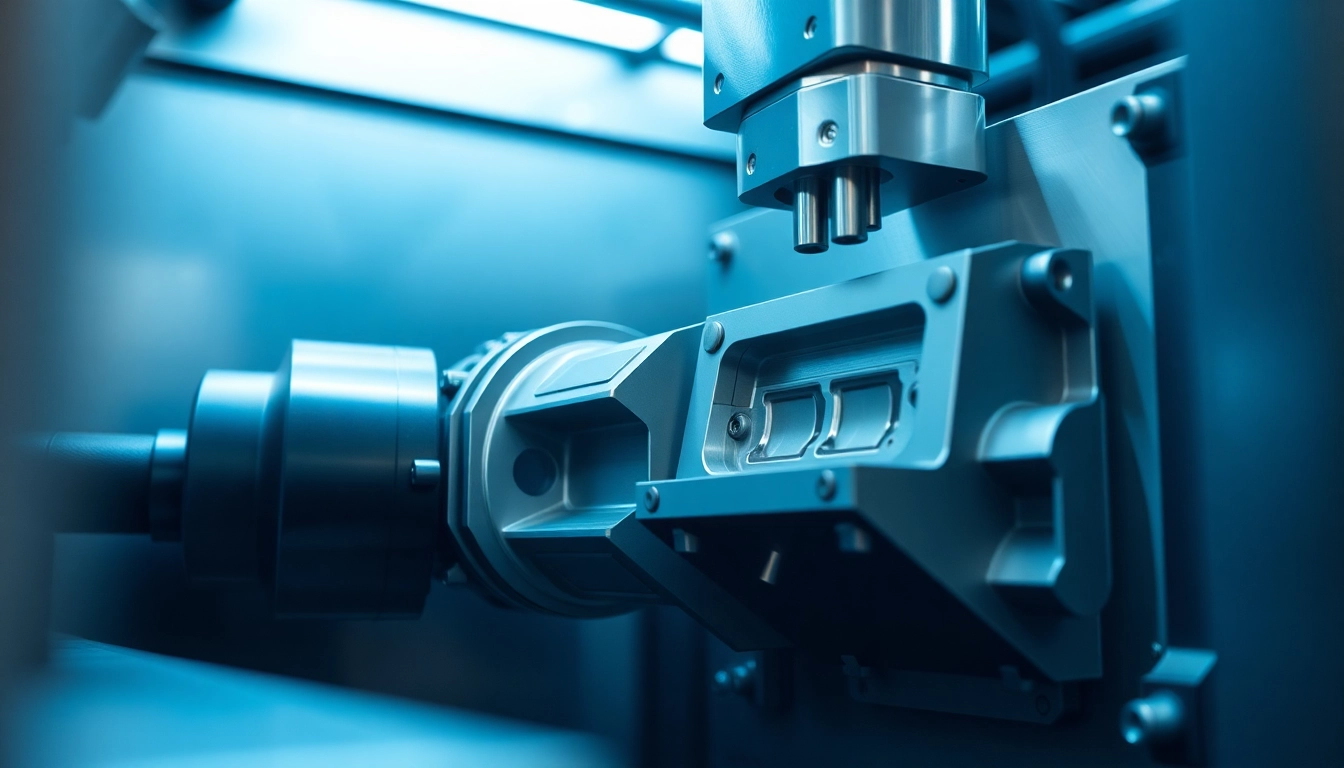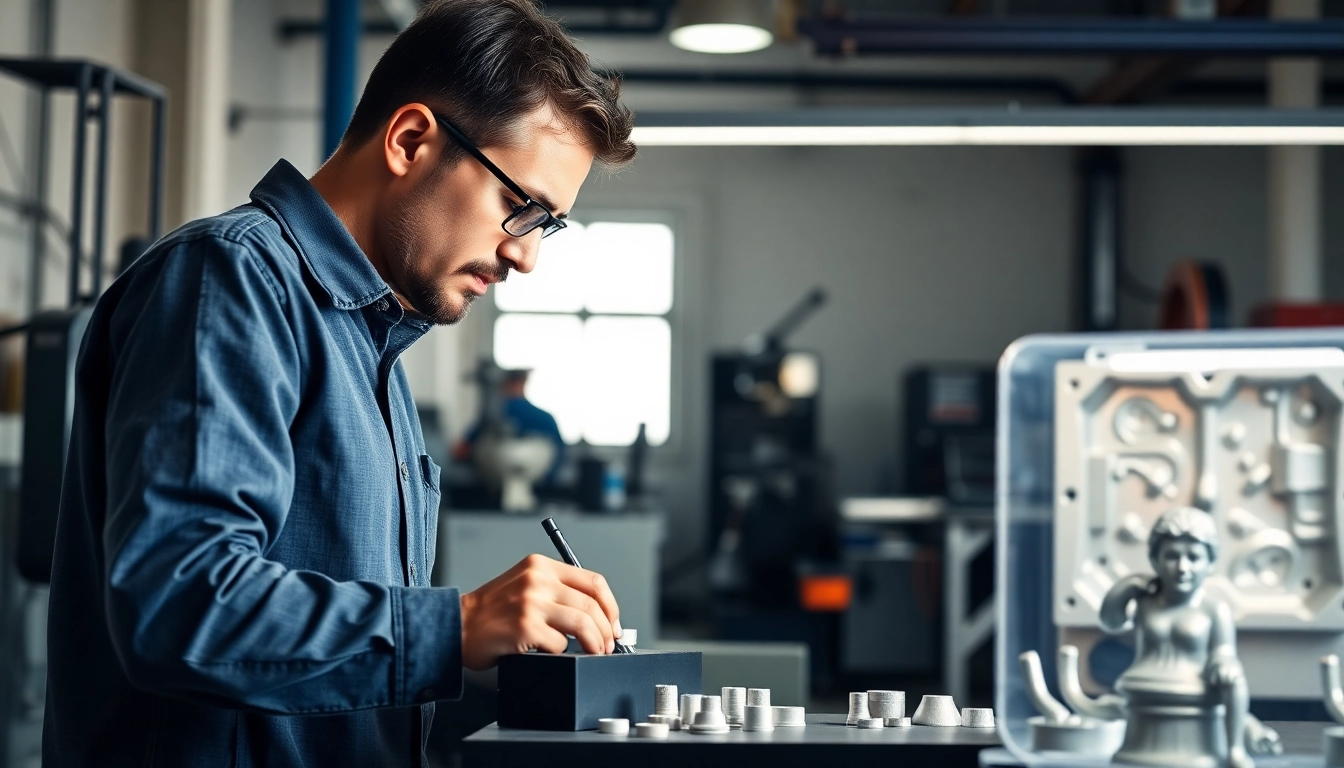Understanding Injection Molding: The Role of a Mold Maker
Injection molding is an essential manufacturing process that plays a significant role in the production of plastic components. A crucial player in this process is the mold maker for injection molding, who is responsible for creating the molds that shape these plastic parts. This article delves deep into the intricacies of injection molding, exploring the responsibilities of mold makers, the skills required to excel in this field, the mold making process, material selection, and emerging trends that are shaping the industry.
What is Injection Molding?
Injection molding is a manufacturing technique used to produce parts by injecting molten material into a mold. This process is widely employed in producing plastic items, including consumer goods, automotive parts, and medical devices. The components are made by injecting materials—typically thermoplastics—into a mold cavity under high pressure, where they cool and solidify, taking the shape of the mold. Injection molding is favored for its efficiency, scalability, and ability to create complex shapes with high precision.
Key Responsibilities of a Mold Maker
The role of a mold maker encompasses various responsibilities, from initial design to the actual fabrication of molds. These responsibilities can be broken down as follows:
- Design Development: Mold makers collaborate with engineers and designers to create mold designs that ensure optimal functionality and efficiency.
- Mold Fabrication: This involves using various machining techniques to build molds, including milling, turning, and electrical discharge machining (EDM).
- Testing and Adjustment: After the mold is fabricated, mold makers test it for precision and performance, making necessary adjustments to achieve the desired specifications.
- Maintenance and Repair: Regular maintenance of molds is crucial for consistency in production. Mold makers are responsible for refurbishing and repairing molds to extend their lifespan.
Importance of Precision in Molding
Precision is paramount in injection molding as it directly influences the quality of the final product. Accurate molds ensure that the finished components meet stringent tolerances and specifications. Any deviation can result in defects such as warping, dimension inaccuracies, and surface imperfections. Consequently, achieving precision in mold making is not just beneficial; it is essential for maintaining product integrity and customer satisfaction.
Essential Skills for a Successful Mold Maker
Mold makers are highly skilled professionals who require a blend of technical and soft skills to excel in their role. The following are essential skills necessary for a successful mold maker:
Technical Knowledge and Experience
The foundation of a mold maker’s career lies in their technical expertise. Knowledge of materials, machining processes, and mold design software is critical. Professionals in this field should be proficient in CAD (Computer-Aided Design) software, as well as CAM (Computer-Aided Manufacturing) techniques. Experience in machining tools and techniques is also vital, as it allows mold makers to create intricate designs and effectively troubleshoot issues during the production phase.
Problem-Solving and Critical Thinking
Mold making often involves encountering unexpected challenges, from design flaws to equipment malfunctions. Therefore, mold makers must possess strong problem-solving skills and the ability to think critically. This enables them to analyze problems quickly, identify feasible solutions, and implement them effectively to minimize production downtime.
Training and Certification Paths
To become a mold maker, candidates typically undergo vocational training or apprenticeships that provide essential hands-on experience. Various technical schools offer specialized programs focusing on mold making, which may lead to certifications further enhancing a mold maker’s qualifications. Continuous education and staying abreast of technological advancements in the field are also crucial for career longevity.
The Mold Making Process: From Concept to Production
The journey of a mold from concept to production involves several critical steps, each contributing to the overall success of the injection molding process.
Initial Design and Prototyping
The first phase of mold making starts with the design. During this stage, mold makers create a CAD model of the desired part, considering factors like material, part geometry, and production volume. Prototypes may be developed using 3D printing or CNC machining to validate the design before fabrication. This phase is crucial for identifying potential issues early in the process, which can save both time and costs.
Mold Fabrication Techniques
Once the design is finalized, the actual fabrication of the mold begins. Various fabrication techniques can be employed, including:
- CNC Machining: Utilizes computer-controlled machines to cut and shape the mold components with high precision.
- EDM (Electrical Discharge Machining): Uses electrical discharges to remove material and create intricate details that might be difficult to achieve with traditional methods.
- Injection Mold Production: This involves combining pre-made components and custom parts to create a complete system that will produce the desired plastic parts.
Testing and Quality Assurance Measures
Following fabrication, molds undergo rigorous testing to ensure they meet quality and performance standards. Quality assurance measures include:
- Checking dimensional accuracy using precision measurement tools.
- Conducting test injections to assess how the molten material interacts with the mold.
- Inspections to identify potential issues such as leaks, cooling inefficiencies, and surface defects.
Choosing the Right Materials for Injection Molds
The selection of materials for molds is a critical decision that impacts both production and product quality. The right materials can enhance the durability of molds and the integrity of the parts produced.
Common Options and Their Applications
Several materials are commonly used in mold making, each with its specific applications:
- Steel: Known for its durability and resistance to wear, steel molds are often used for high-volume production runs.
- Aluminum: Lighter and easier to machine than steel, aluminum molds are often preferred for smaller production runs and prototyping.
- Bronze: Often used for molds that require a high degree of heat resistance.
Cost vs. Quality: Finding the Balance
When selecting materials, manufacturers must strike a balance between cost and quality. While cheaper materials may reduce upfront costs, they can lead to longer-term expenses due to increased wear and tear. Mold makers must evaluate the trade-offs carefully, considering factors such as production volume, required precision, and operational conditions.
Innovative Materials on the Market
Recent advancements in materials science have introduced innovative options for mold fabrication, such as composite materials and high-performance plastics. These materials can offer advantages in terms of weight savings, enhanced thermal properties, and improved economic efficiencies for certain applications, prompting mold makers to explore and adapt new technologies.
Future Trends in Mold Making and Injection Molding
The landscape of mold making and injection molding is constantly evolving, driven by technological advancements, changing market demands, and a focus on sustainability. The following trends are shaping the future of this industry.
Advancements in Technology
Technology continues to revolutionize mold making. Innovations such as artificial intelligence (AI) and machine learning are now being utilized to enhance design processes and optimize manufacturing. AI can analyze data from previous productions to predict mold performance and identify potential areas for improvement, allowing mold makers to produce higher-quality molds faster.
Sustainability Practices in Manufacturing
As environmental concerns grow, sustainability practices are becoming more prevalent in mold making. This includes the use of eco-friendly materials, waste reduction initiatives, and energy-efficient manufacturing processes. Mold makers are increasingly under pressure to adopt sustainability practices that reduce the environmental impact of production activities.
The Impact of 3D Printing on Mold Making
3D printing technology has emerged as a game-changer in mold making, enabling faster prototyping and more flexible design iterations. This technology allows for the creation of complex geometries that can enhance mold efficiency and reduce production lead times. Moreover, 3D-printed molds may be made from materials that are less costly than traditional options, facilitating cost-effective solutions for low-volume and prototype runs.
Conclusion
The role of a mold maker for injection molding is multifaceted and critically important in the manufacturing sector. As technology continues to evolve, so too will the processes and techniques employed by mold makers. With a firm understanding of injection molding processes, a commitment to precision, and an eye on future trends, mold makers can significantly contribute to the success of manufacturing operations across various industries. The interplay of skills, materials, and emerging technologies will shape the future of this essential field, ensuring that it remains resilient and adaptive to the dynamic demands of the market.




